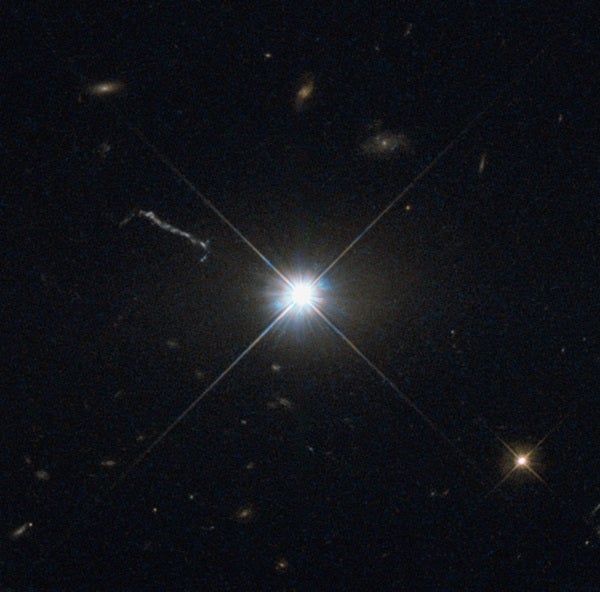To become a quasar, a black hole must meet a few criteria. It must be supermassive: millions or billions of times the mass of our Sun. Such black holes are found in the centers of most large galaxies, but even then, not every galaxy hosts a quasar. Specifically, a quasar is a supermassive black hole that is actively feeding on material. The infalling matter has swirled into a disk that has heated up, and it shines so brightly that its light drowns out the rest of the galaxy around the black hole.
“Quasar” is short for “quasi-stellar radio source,” which is how these objects were discovered. About 60 years ago, astronomers saw strange, starlike objects in visible light and radio surveys. Today, we know that not only are these objects quite distant, they are also powered by accretion onto a supermassive black hole.
What about supermassive black holes that aren’t feeding so voraciously? These are not quasars. Some are relatively dormant, like our own Milky Way’s central black hole. Others are active, but not active enough to outshine their host galaxies. Astronomers call them active galactic nuclei, and they come in a variety of flavors. Quasars simply top the list for the brightest active galactic nuclei. What’s more, a quasar seems to be a relatively short-lived phase of a black hole’s life. So, a black hole that is quiet today may have once been a quasar, and the quasars we see in the distant past will eventually “turn off” after they’ve eaten everything around them.










